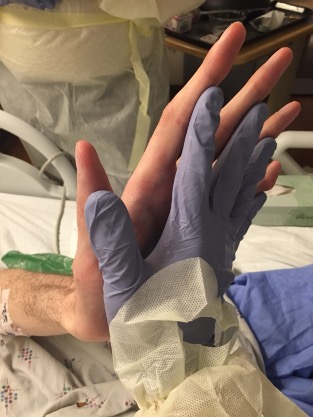
A 70 y/o man presents with new exertional dyspnea, orthopnea/PND, wide pulse pressure (~100 mm Hg), and elevated JVP. A physical finding is identified (video). Echo: preserved systolic function, no valvular disease. Thoughts? What would you do next? #PhysicalExam #cardiotwitter
Incredible discussion. Like many here I questioned the echo. Then realized Quincke's pulse = high-output state (not always AR). Sent for RHC to confirm high-output HF. Sure enough, CO was 12.5 L/min (CI 4.8 L/min/m2). Workup for cause underway. #PhysicalExam led to diagnosis. 



Physical exam was pivotal in this case. Without it, most of us would have concluded that this was "just another case of diastolic heart failure" and stopped there. Without seeing Quincke's pulse, there is no question that I would have unknowingly marched down the wrong path.
At this point thiamine deficiency (beriberi) and AV shunt are highest on my differential. Patient drinks ~2 glasses of wine/day. EtOH causes thiamine deficiency via several mechanisms, so even if patients consume a normal diet and don't appear malnourished, it is still possible. 

Thanks @DocRock54 for asking for follow-up. The thiamine assay won't result until 12/22. If negative, then next step will be to look for shunt. I have corresponded with the authors of the excellent review below, who offered some advice about shunt workup (see image). More soon. 



UPDATE. This patient has wet beriberi. Thiamine replacement should result in total cure. Heinrich Quincke is still helping patients nearly 100 years after his death. Is that not immortality? 

• • •
Missing some Tweet in this thread? You can try to
force a refresh

















